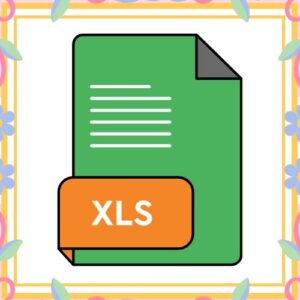Top 10 excel formulas for Accountants & Auditor
Top 10 Excel Formulas for Audit and Income Tax
Excel is one of the most powerful tools for accountants and tax professionals. Whether you’re preparing for an audit, working on GST filings, or managing income tax calculations, Excel formulas can save hours of manual work. In this post, we explore the top 10 Excel formulas that are particularly helpful in audit and income tax work. These formulas help in calculating deductions, reconciling figures, and ensuring accurate reporting—especially when you are preparing data for use in accounting software like Tally.
1. What is the Use of SUMIF in Audit Reports?
=SUMIF(range, criteria, sum_range) is useful to total values that meet specific criteria. For example, summing expenses by cost center or tax category. This formula is widely used in tax reconciliations.

2. How Does VLOOKUP Help in GST or 26AS Matching?
=VLOOKUP(lookup_value, table_array, col_index_num, [range_lookup]) helps in pulling matching data from multiple sheets—ideal for comparing GSTR-2B data with purchase registers or 26AS vs books of accounts.
3. Why Use IF Statements in Tax Calculations?
=IF(condition, value_if_true, value_if_false) allows for conditional logic, e.g., checking whether income is above ₹5 lakhs and applying a deduction limit accordingly. Useful in 80C, 80D, or surcharge checks.
4. Can CONCATENATE/CONCAT Be Useful in Tally XML Data?
Yes. Combining voucher data like “Invoice No – Date” or merging address fields is often needed when preparing Excel files for bulk upload in Tally. Use =CONCAT(A1, B1) or =TEXTJOIN(" ", TRUE, A1, B1) for better formatting.
5. How is ROUND or ROUNDUP Used in Tax Return Filing?
=ROUND(number, num_digits) or =ROUNDUP() is often required to round off tax liability or GST amounts to the nearest rupee to match Tally or income tax filing rules.
6. Where to Use TEXT Formula in Audit Reports?
=TEXT(value, format_text) is used to convert numbers into readable dates or formats like currency. For instance, using =TEXT(A1, "₹#,##0.00") to format income as currency for audit reports.
7. How to Track 80C/80D Investments with Excel?
Using =SUMIFS() or =FILTER() you can create structured lists that automatically tally up LIC, PPF, Mediclaim premiums, etc. Excel helps maintain a clean 80C tracker, which simplifies Tally entries via XML files.
8. What Role Does COUNTIF Play in TDS or GST Reports?
=COUNTIF(range, criteria) can be used to count entries missing PAN or GST numbers. This helps audit teams check compliance before Tally entries are finalized.
9. How to Identify Errors with ISERROR and IFERROR?
=IFERROR(formula, "Error") or =ISERROR() ensures your audit sheets don’t break due to #N/A or #DIV/0! errors. Very useful during reconciliation reports.
10. How Our Excel to Tally XML Tool Simplifies Final Entry?
After all calculations are finalized in Excel using above formulas, our Free Excel to Tally XML Converter helps you directly upload them into Tally Prime, Tally ERP 9, or older versions. It supports vouchers like Journal, Payment, Receipts, and master items like Ledgers and Stock Items.
Final Thoughts
Mastering Excel formulas gives tax professionals a major edge—be it faster audits, smooth income tax filing, or Tally integration. These formulas are vital for automation and accuracy. Don’t forget to leverage tools like the Free Excel to Tally XML Converter to make your final accounting uploads error-free and efficient.